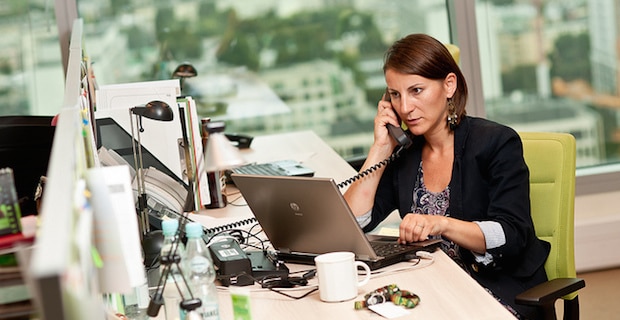
If you feel nauseous at the end of the work day, it may not be your boss that’s making you sick. Chances are it’s your office, which is fraught with so many hidden chemicals lurking in your office paint, carpet, furniture, cleaners and printer, it’s like a toxic brewery! Headaches, throat irritation, difficulty concentrating, fatigue, and other troublesome symptoms can all be products of what the World Health Organization (WHO) calls Sick Building Syndrome. Inadequate ventilation, chemical contaminants from indoor sources, chemical contaminants from outdoor sources & biological contaminants are wreaking havoc on your health. BUT… there is light at the end of the GREEN tunnel! How can you make it through the day without holding your breath for eight hours? The Healthy Home Dream Team, Lisa and Ron Beres, are here to reveal some essential secrets!
Did You Know?
- According to the WHO, up to 30% of new and remodeled buildings worldwide may be linked to symptoms of Sick Building Syndrome!
- An estimated 69 million workers reported missing days of work due to illness resulting in 407 million lost work days and $48 billion in lost economic output!
- Americans spend 90% of our time indoors in air that is 2-5 and up to 100 times more polluted than the outdoor air!
- 50% of all illnesses in the U.S. is caused by indoor air pollution.
- Asthma rates have quadrupled in the past 20 years.
Read more about houseplants as indoor air purifiers
1. Don’t waste energy.
Office buildings account for 28% of commercial energy demand, according to the Department of Energy. A few simple changes can decrease office energy use. First, adjust the sleep mode on your computer to start after 5 minutes of idle time. Desktop computers can create 1500 pounds of carbon dioxide a year. By enabling sleep mode, you can reduce energy consumption by up to 70.
2. Don’t become allergic to your office.
Dust is the second leading cause of allergies, followed by pollen. Many offices have a very serious dust mite problem and there are likely millions in yours. Each dust ball can contain as many as 250,000 dust mites. Avoid dust and other contaminants by using an air purifier that uses a true, medical-grade HEPA in combination with a granular carbon filter. The HEPA filter helps trap contaminants including dust and other particles of .3 microns or larger, while the carbon absorbs toxic chemicals that may be emanating from office equipment like the printer and fax.
3. Create a green sanctuary.
Many plants like Gerber daises, Philodendrons and Peace Lilies absorb airborne pollutants, making the air you breathe cleaner. Although plants are not a replacement for an air purifier, they do a great job of filtering out various contaminants like formaldehyde and benzene. They also help to create a better atmosphere to work in.
4. What’s outside your drinking water?
Over 1 million plastic bottles go into landfills every day in America. This requires 1.5 million barrels of oil to produce and more than 1 million tons of plastic; emitting more greenhouse gas than 500,000 cars. They also pose health risks so be sure to check the SPI number located on the bottom of the bottle (inside the triangle). Use only plastic bottles that are numbered #1, #2, #4 and #5. They contain polyethylene or polypropylene and require the use of less toxic additives and are non?chlorinated. Make sure to avoid plastic numbers PVC (#3), polystyrene (#6), and polycarbonate (#7) which contain hormone disruptors or other horrible chemicals. Or, stick with stainless steel reusable bottles.
Read more about drinking water and what you need to know
Written by Ron & Lisa Beres. This article originally appeared on ronandlisa.com. Click to access a .pdf 'cheat sheet': 10 Steps to a Healthy Office.
Image: Kompania Piwowarska




